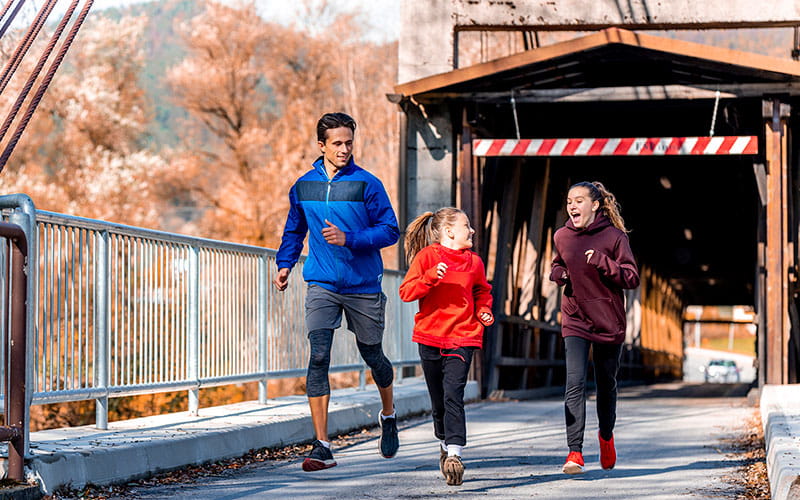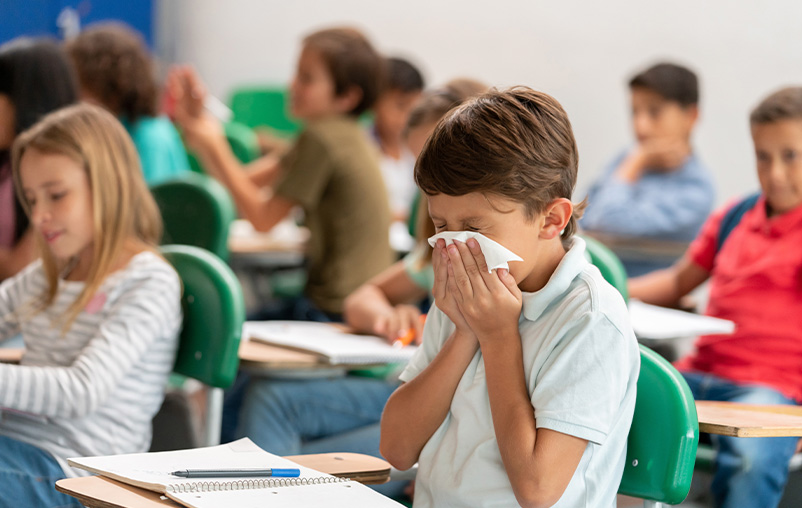To a toddler, the world is full of exciting shapes, colors and objects to explore. Some of those brightly colored bottles hold tasty things, like juice or milk.
But not everything in a colorful bottle is safe to drink. “A lot of our chemicals and cleaners are bright, fun colors like our sports drinks and our juices,” said Mandy Fultz with Safe Kids San Antonio. “If your child isn’t of reading age yet, they may confuse the two,” says Mandy. This is why it’s important to be proactive and childproof your home against poisons.
Household Safety Tips
When kids get curious and grab household chemicals or cleaners—especially their parents aren’t looking—it can be really dangerous. Here are six child safety tips for any household:
- Store all household products out of sight and reach. Young kids are often eye-level with items under the kitchen and bathroom sinks. Move bleach, detergents, dishwasher liquid or cleaning solutions to a more secure place.
- Install child safety locks on cabinets containing toxic items. It’s fast, easy and cheap.
- Read product labels for potential hazards. Dangerous household items include makeup, personal care products, plants, pesticides, lead, art supplies, alcohol and carbon monoxide.
- Don’t leave toxic substances unattended while you’re using them — to answer the phone or the doorbell.
- Keep cleaning products in their original containers. Never put poisonous products in a plastic soda bottle, for example, where it could be easily mistaken for something else.
- Get rid of old medicines and other toxic substances. Survey storage areas and your garage for products you don’t need any more.
And remember, if your child does swallow something potentially dangerous and isn't acting normally, call the South Texas Poison Center at 800-222-1222. If your child isn’t responsive or is behaving abnormally, call 911.
Common Places Children Find Household Poisons
To keep your kids safe from household poisons, it’s important to identify areas that have potential hazards. Here are five places with some of the common household items that are toxic for children:
- Garage: Antifreeze, windshield cleaner, gasoline, charcoal lighter, pesticides, fertilizers, garden chemicals, fungicides and flea and pest powder.
- Bedrooms: Cosmetics, cologne, hair spray, nail polish and remover, mothballs, medications and vitamins.
- Bathroom or laundry room: Pine oil, drain and toilet cleaners, bleach, disinfectants, detergents, detergent pods and aerosol sprays.
- Kitchen: Insect killer, metal polish, alcohol, dishwashing detergent and oven cleaner.
- Home workshop: Solder, lead, cadmium, formaldehyde, solvents, paint and paint thinner.
What to Do if Your Child Swallowed Poison
If you think your child has swallowed something they shouldn’t have, make sure to take the following steps:
- Remain calm. This will let you make good decisions. It will also show your child that you are in control of the situation and that things will be OK.
- Call 911, your local emergency number, or the poison control center at 800-222-1222.
- Read the label of the swallowed product to the health care provider.
- Follow the instructions of the healthcare provider exactly. Don’t make your child throw up. Vomiting can cause further damage. This is especially true if the child has swallowed lye, dishwashing detergents, drain cleaners or paint thinners.
Injury Prevention at University Health
University Health is the lead partner of Safe Kids San Antonio. The advocacy group shares tips you need to know to help keep household cleaners and other toxic products out of reach from your children.
Our injury prevention program also offers more information about home safety tips.





